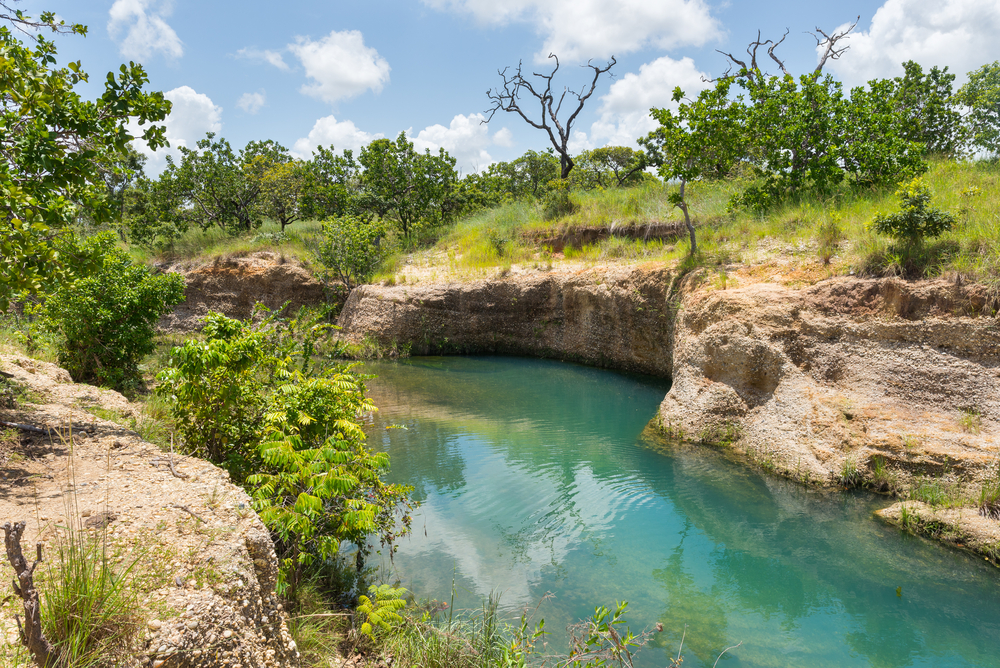Turuépano Overview
Turuepano National Park, or Parque Nacional Turuepano in Spanish, is a protected area located in northeastern Venezuela, within Sucre State.
Encompassing approximately 1,935 square miles (5,012 square kilometers), the park is part of the expansive Orinoco Delta region, characterized by vast wetlands, mangrove forests, and a complex network of rivers and estuaries. The park was established to preserve the unique ecosystems of the Gulf of Paria, an area rich in biodiversity and vital for the conservation of Venezuela’s coastal and wetland habitats.
The terrain of Turuepano National Park is primarily composed of extensive low-lying wetlands, river channels, and swamp forests. The park’s mangrove forests are among its most defining features, with species such as red mangrove (Rhizophora mangle) and black mangrove (Avicennia germinans) dominating the landscape.
These mangroves provide crucial habitat for a diverse range of marine and terrestrial species. Interspersed within the wetlands are patches of tropical rainforest, where towering trees and thick undergrowth create a lush environment. The park’s waterways are influenced by tidal flows from the Atlantic Ocean, making the ecosystem highly dynamic and supportive of a wide range of aquatic life.
The wildlife within Turuepano National Park is particularly diverse, as it serves as a haven for both terrestrial and aquatic species. Among the most notable mammals found in the park are the neotropical river otter, giant anteater, and jaguar, which roam the denser forests. Manatees are also present in the park’s waters, as the estuaries and mangroves provide an ideal environment for these gentle marine mammals.
Birdlife is abundant, with species such as the scarlet ibis, roseate spoonbill, and various herons making their home in the park’s wetlands. Raptors like the black-collared hawk and harpy eagle are occasionally spotted soaring above the forest canopy. Reptiles such as the spectacled caiman and green anaconda inhabit the marshes and slow-moving waters, contributing to the park’s diverse fauna.
One of the most popular aspects of Turuepano National Park is its pristine and largely untouched landscape, offering visitors a chance to experience an unspoiled natural environment. The park is particularly appealing to birdwatchers, as the abundance of wading birds and raptors makes it an excellent destination for ornithologists and wildlife enthusiasts.
Boat tours through the mangroves and wetlands allow visitors to explore the intricate waterways, providing opportunities to observe rare and elusive wildlife in their natural habitats. Kayaking is another way to experience the park’s waterways while minimizing environmental impact. Fishing, particularly for species such as tarpon and snook, is also a favored activity, though it is regulated to maintain ecological balance.
Turuepano National Park faces conservation challenges, particularly from illegal logging, poaching, and the impacts of climate change on its fragile wetlands. Rising sea levels and changing rainfall patterns have the potential to alter the delicate balance of the park’s ecosystem.
However, conservation efforts have been undertaken to address these issues, with organizations working to protect key habitats and species through sustainable management practices. Environmental education programs aim to raise awareness among local communities about the importance of preserving the park’s biodiversity. Despite these challenges, Turuepano remains an essential sanctuary for wildlife and an invaluable natural resource for Venezuela’s conservation efforts.
















































































